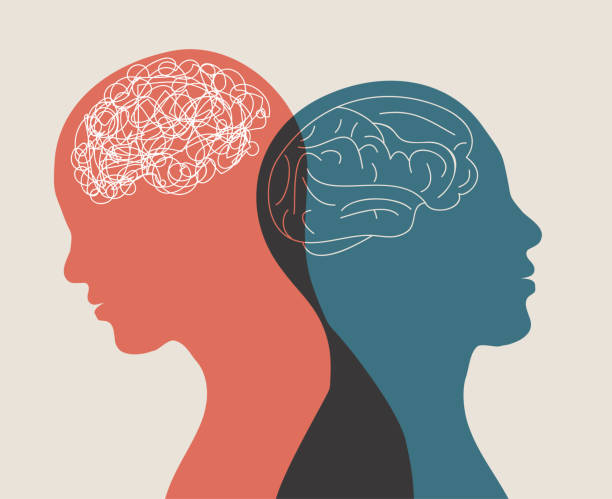Introduction
In everyday conversation, saying someone has “good vibes” or “bad vibes” is shorthand for a rapid, almost instinctive judgment about their character or emotional state. While “vibes” may sound casual or even mystical, psychological research reveals that these split-second impressions are rooted in well-documented cognitive processes. Humans are remarkably adept at forming evaluations of others within fractions of a second, often without conscious awareness. These impressions — whether accurate or biased — influence social interactions, decision-making, and even life outcomes.
Read More: First Impressions
The Foundations of First Impressions
The study of rapid social judgments dates back to the mid-20th century. Solomon Asch’s (1946) classic experiments demonstrated that people form holistic impressions based on a few salient traits, with initial information heavily shaping subsequent interpretation. In modern terms, this means that the “vibe” we get in the first seconds of meeting someone often becomes the lens through which we interpret their later behavior.
More recent work by Willis and Todorov (2006) found that people form consistent judgments of a stranger’s trustworthiness, competence, and likability after viewing their face for just 100 milliseconds. Strikingly, these snap judgments are highly correlated with impressions formed after unlimited viewing time, suggesting that our minds rely heavily on immediate perceptual cues.
Thin-Slicing and Rapid Judgments
The concept of “thin-slicing,” popularized by Ambady and Rosenthal (1992), refers to the ability to make accurate assessments of people or situations based on very brief observations. In a well-known study, participants who viewed a silent 30-second clip of a teacher accurately predicted end-of-semester student evaluations. This suggests that micro-behaviors — posture, facial expressions, and tone of voice — carry significant informational value.
Thin-slicing supports the idea that “vibes” are not purely subjective whims but can sometimes reflect real interpersonal qualities. However, it also underscores the risk of overgeneralization, as these quick assessments may rely on stereotypes or culturally biased cues.
Mechanisms Behind Instant Impressions
From an evolutionary standpoint, the capacity to rapidly assess others likely provided survival advantages. In ancestral environments, making quick determinations about whether a stranger was friend or foe could mean the difference between safety and danger. This instinctive process engages several neural systems:
- Amygdala – Rapidly evaluates potential threats or rewards from facial and body cues.
- Fusiform face area – Specializes in facial recognition and identity processing.
- Prefrontal cortex – Integrates sensory input with social and emotional context.
These systems work together almost instantaneously, producing an impression before conscious reasoning has time to intervene (Todorov, Said, Engell, & Oosterhof, 2008).
Common Cues That Shape “Vibes”
Research identifies several specific factors that often influence first impressions:
- Facial expressions – A genuine smile can increase perceived trustworthiness and warmth, while a furrowed brow may suggest anger or hostility.
- Eye contact – Moderate, steady eye contact tends to signal confidence; too little or too much can be interpreted as avoidance or aggression.
- Posture and movement – Open, relaxed stances are generally viewed more positively than closed, tense ones.
- Tone of voice – Even when content is neutral, pitch, pace, and rhythm can influence perceptions of competence and warmth.
- Grooming and attire – Clothing choices and overall appearance often serve as heuristic shortcuts for assessing professionalism, social status, or cultural affiliation.
While these cues can convey useful information, they are also susceptible to bias — for instance, cultural norms about eye contact vary widely, and what signals confidence in one society may suggest arrogance in another.
Implications and Biases
First impressions exert a powerful influence on social and professional outcomes. In hiring contexts, interviewers often make preliminary decisions within the first few seconds (Barrick, Shaffer, & DeGrassi, 2009). In politics, candidates judged as more competent-looking are statistically more likely to win elections, even when voters know nothing about their policies (Todorov, Mandisodza, Goren, & Hall, 2005).
However, the very speed of these judgments makes them prone to error. Snap assessments can reflect unconscious biases related to race, gender, age, or other visible traits (Macrae & Bodenhausen, 2000). This is why awareness and deliberate counter-checking are essential. While “vibes” can sometimes guide us toward accurate social judgments, they can also perpetuate stereotypes and discrimination.
Can We Change Someone’s First Impression?
Although first impressions are notoriously sticky, they are not always irreversible. Research suggests that impressions can be updated when new, consistent information challenges the initial perception (Cone, Mann, & Ferguson, 2017). Strategies for improving or reshaping the “vibe” one gives off include:
- Mindful body language – Adopting open postures and relaxed gestures.
- Controlled pacing – Speaking clearly and at a moderate speed to project confidence.
- Consistent follow-through – Demonstrating reliability over repeated interactions.
It is also helpful to recognize the role of confirmation bias: once we form an impression, we tend to notice behaviors that confirm it and overlook those that contradict it.
Conclusion
The science of “vibes” reveals that first impressions are not mystical but grounded in rapid, evolutionarily adaptive cognitive processes. Within a fraction of a second, our brains integrate visual, auditory, and contextual cues to produce an immediate social evaluation. While these impressions can sometimes be surprisingly accurate, they are also shaped by bias and cultural norms. Understanding the mechanisms behind “vibes” can help us harness their benefits — such as quickly detecting genuine warmth or potential danger — while guarding against their pitfalls. By combining our instinctive assessments with deliberate reflection, we can navigate social interactions with both intuition and fairness.
References
Ambady, N., & Rosenthal, R. (1992). Thin slices of expressive behavior as predictors of interpersonal consequences: A meta-analysis. Psychological Bulletin, 111(2), 256–274. https://doi.org/10.1037/0033-2909.111.2.256
Asch, S. E. (1946). Forming impressions of personality. Journal of Abnormal and Social Psychology, 41(3), 258–290. https://doi.org/10.1037/h0055756
Barrick, M. R., Shaffer, J. A., & DeGrassi, S. W. (2009). What you see may not be what you get: Relationships among self-presentation tactics and ratings of interview and job performance. Journal of Applied Psychology, 94(6), 1394–1411. https://doi.org/10.1037/a0016532
Cone, J., Mann, T. C., & Ferguson, M. J. (2017). Changing our impressions of others: Motivated corrections of implicit evaluations. Journal of Personality and Social Psychology, 112(5), 717–742. https://doi.org/10.1037/pspa0000086
Macrae, C. N., & Bodenhausen, G. V. (2000). Social cognition: Thinking categorically about others. Annual Review of Psychology, 51, 93–120. https://doi.org/10.1146/annurev.psych.51.1.93
Todorov, A., Mandisodza, A. N., Goren, A., & Hall, C. C. (2005). Inferences of competence from faces predict election outcomes. Science, 308(5728), 1623–1626. https://doi.org/10.1126/science.1110589
Todorov, A., Said, C. P., Engell, A. D., & Oosterhof, N. N. (2008). Understanding evaluation of faces on social dimensions. Trends in Cognitive Sciences, 12(12), 455–460. https://doi.org/10.1016/j.tics.2008.10.001
Willis, J., & Todorov, A. (2006). First impressions: Making up your mind after a 100-ms exposure to a face. Psychological Science, 17(7), 592–598. https://doi.org/10.1111/j.1467-9280.2006.01750.x
Subscribe to PsychUniverse
Get the latest updates and insights.
Join 3,027 other subscribers!
Niwlikar, B. A. (2025, August 15). The Science of “Vibes” and 5 Important Cues of It. PsychUniverse. https://psychuniverse.com/the-science-of-vibes-and-5-important-cues-of-it/



